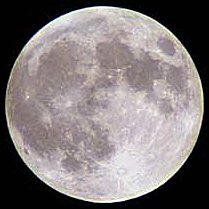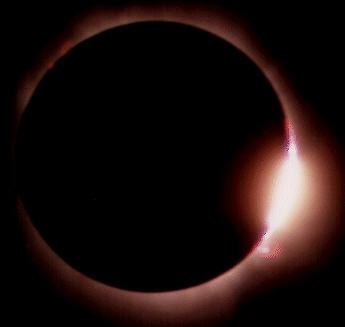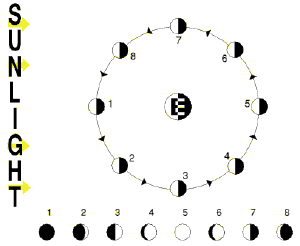
the Moon

The Moon is the Earth's sole companion, orbiting at an average distance of 384,400km. It follows us on our path around the Sun, making one orbit of us (as seen against the background of stars) every 27 days, 7 hours, 43 minutes. This period is referred to as the sidereal month. The Moon's equatorial diameter measures 3,476km making it less than one third the diameter of the Earth. The tides in the Earth-Moon system have slowed the Moon's rotation and locked it to Earth, this is tidal coupling and occurs throughout the Solar System.
Fleeting Eclipses As the orbital plane of the Moon lies within 5 deg of the apparent orbit of the Sun as seen from Earth, occasionally their positions in the sky coincide, giving rise to a solar eclipse.

At other times the Moon's orbit takes it into the shadow cast by the Earth into space, causing a lunar eclipse. Unlike solar eclipses, Lunar eclipses are readily observed from large areas of the Earth's surface, due to the greater extent of the Earth's shadow than that of the Moon's.
Changing Shape As we see the Moon only in reflected light, it shows distinct phases, depending on the angle made between itself, the Sun and the Earth, as the diagram shows.

At New Moon (1), all three bodies are aligned, with the Moon between the Earth and the Sun. During this phase, despite the absence of direct illumination by the Sun, the lunar surface is just visible in light reflected from the Earth. Full Moon (5) occurs when the Earth lies directly between the Sun and the Moon, with first (3) and last (7) quarters occurring at the 90 deg and 270 deg positions. The time taken from New Moon to New Moon, called the synodic month, is 29 days, 12 hours, 44 minutes.